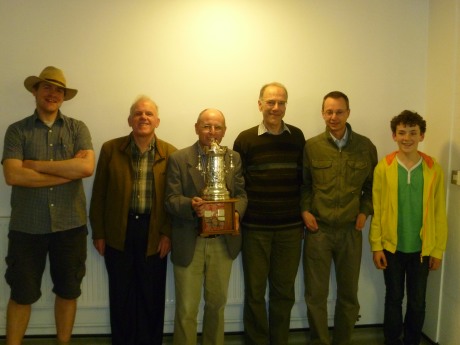Happy Birthday Malcolm Barker (21-iv-1934)
Tag Archives: 2020
The Modernized Scotch Game : A Complete Repertoire for White and Black
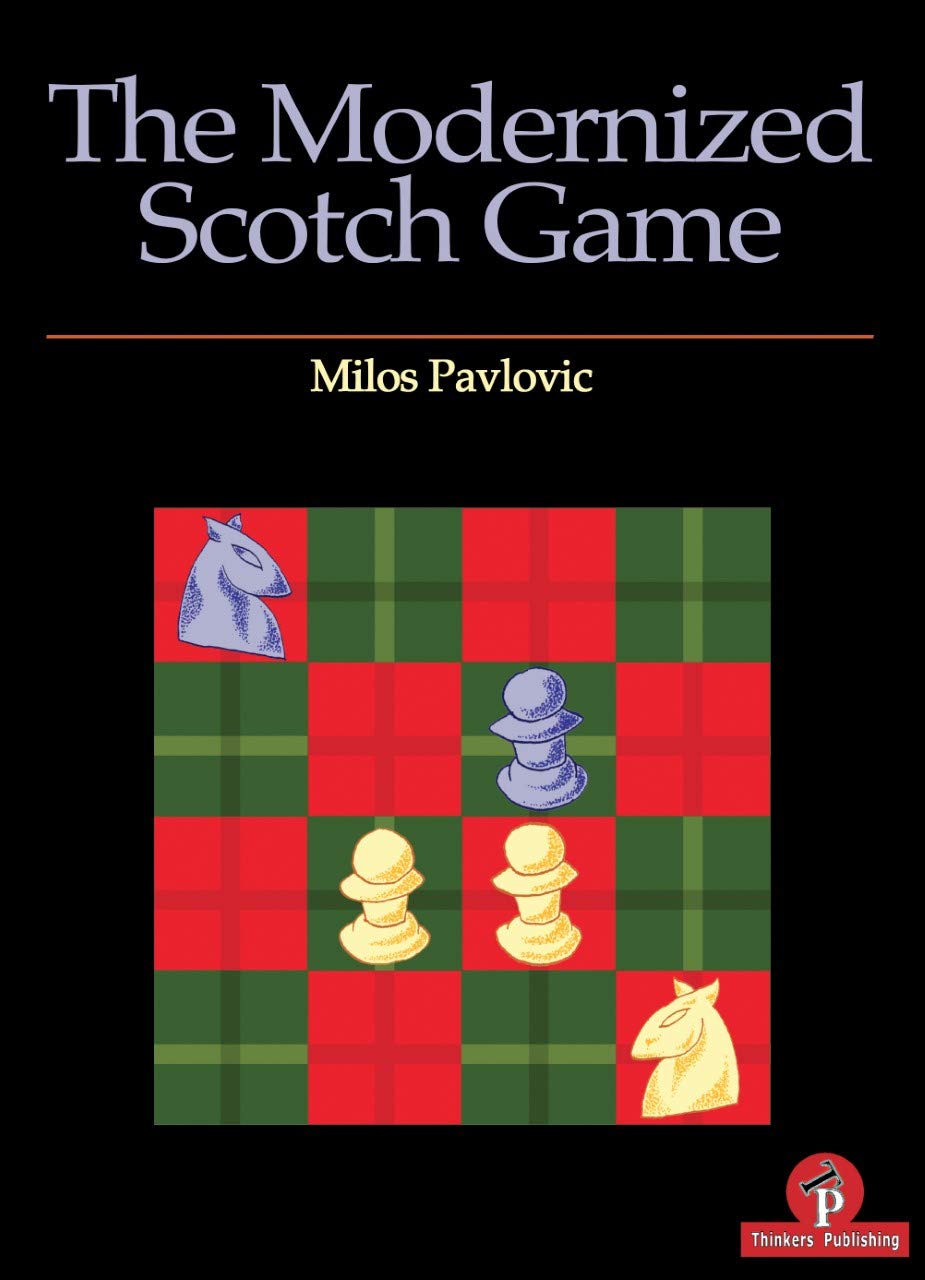
Grandmaster Milos Pavlovic was born in Belgrade in 1964 and was Yugoslav Champion in 2002. He is a well known theoretician specialising in opening theory and has written many chess books and magazine articles. Previously we have reviewed The Modernized Stonewall Defence and The Modernized Colle-Zukertort Attack by this author.

This is another title in the “Modernized” series from Thinkers Publishing with this Scotch Game book being published on December 17th 2019. We first reviewed a title in this series with The Modernized Caro-Kann from GM Daniel Fernandez and then followed by The Modernised Colle-Zukertort from Pavlovic.
As with every recent Thinkers Publishing publication high quality paper is used and the printing is clear. The book can easily be laid flat next to the board and does not require weights to prevent it from “self-closing” (a particular bugbear of ours !). Each diagram is clear and the instructional text is typeset in two column format, which, we find, enables the reader to maintain their place easily. Figurine algebraic notation is used throughout and the diagrams are placed adjacent to the relevant text and each diagram has a “to move” indicator.

Andrew Martin, Bramley, Surrey, 5th November, 2020

Book Details :
- Hardcover : 280 pages
- Publisher: Thinkers Publishing (17 Dec. 2019)
- Language: English
- ISBN-10: 9492510731
- ISBN-13: 978-9492510648
- Product Dimensions: 17.02 x 1.52 x 23.37 cm
Official web site of Thinkers Publishing

Best Wishes IM Philip Morris (05-xi-1967)

We wish IM Philip J Morris all the best on his birthday, this day (November 5th) in 1967.
Phil plays regularly for Beckenham & Charlton Chess Club in the London Chess League and has played for Invicta Knights Maidstone in the Four Nations League.
Birthday of IM Philip Morris (05-xi-1957)
We wish IM Philip J Morris all the best on his birthday, this day (November 5th) in 1967.
Phil plays regularly for Beckenham & Charlton Chess Club in the London Chess League and has played for Invicta Knights Maidstone in the Four Nations League.
Birthday of IM Philip Morris (05-xi-1957)
We wish IM Philip J Morris all the best on his birthday, this day (November 5th) in 1967.
Phil plays regularly for Beckenham & Charlton Chess Club in the London Chess League and has played for Invicta Knights Maidstone in the Four Nations League.
Birthday of IM Philip Morris (05-xi-1957)
We wish IM Philip J Morris all the best on his birthday, this day (November 5th) in 1967.
Phil plays regularly for Beckenham & Charlton Chess Club in the London Chess League and has played for Invicta Knights Maidstone in the Four Nations League.
Birthday of IM Philip Morris (05-xi-1957)
We wish IM Philip J Morris all the best on his birthday, this day (November 5th) in 1967.
Phil plays regularly for Beckenham & Charlton Chess Club in the London Chess League and has played for Invicta Knights Maidstone in the Four Nations League.
Steinitz in London : A Chess Biography with 623 Games

Steinitz in London : A Chess Biography with 623 Games : Tim Harding

“Tim Harding played for Ireland at the 1984 FIDE chess Olympiad in Thessaloniki. He is a FIDE Candidate Master and a Senior International Master of correspondence chess. A well-known writer on many aspects of chess, Tim is a former editor of Chess Mail magazine and for almost 20 years he contributed monthly articles in “The Kibitzer” series. He lives in Dublin, Ireland.”
From the publisher’s blurb :
“Drawing on new research, this first biography of William Steinitz (1836-1900), the first World Chess Champion, covers his early life and career, with a fully-sourced collection of his known games until he left London in 1882. A portrait of mid-Victorian British chess is provided, including a history of the famous Simpson’s Divan. Born to a poor Jewish family in Prague, Steinitz studied in Vienna, where his career really began, before moving to London in 1862, bent on conquering the chess world. During the next 20 years, he became its strongest and most innovative player, as well as an influential writer on the game. A foreigner with a quarrelsome nature, he suffered mockery and discrimination from British amateur players and journalists, which eventual drove him to immigrate to America. The final chapters cover his subsequent visits to England and the last three tournaments he played there.”
Collectors of McFarland’s chess biographies will know exactly what to expect.
A handsome, beautifully produced hardback book based on extensive and exhaustive research, in this case concerning William Steinitz (Harding prefers to use the anglicized spelling of his name), the first official world champion.
He was born under the name Wolf Steinitz into a Jewish family in Prague in 1836, making him a year older than Morphy. He moved to Vienna to study mathematics in 1858, and it was there that he started playing chess seriously. In 1862 he travelled to London to play in an international tournament, and remained there, living the life of a chess professional, for 20 years.

Here’s Harding, in the Preface:
“This is not just a game collection but also an important biographical work. Subsequent to his triumphant comeback at the Vienna international tournament and his resignation as chess editor of The Field, Steinitz left England for a long tour of America. In the spring of 1883 he returned to play in the London 1883 tournament, after which he spent some more time in London; Chapter 12 deals with this. Steinitz then left England permanently and did not set foot in the country for another 12 years. The final chapter deals with his last visits to Britain which included two major tournaments, Hastings 1895 and London 1899. There is much less biography than chess in those two chapters but some information about his European tours is included. The tasks of writing a new biography of the final phase of Steinitz’s life after he left England, and of providing an authoritative game collection of his post-London period, are left for future scholars.
“The primary motivation for embarking on the research for this book was to present a chronological account of Steinitz’s two decades as an English resident, covering both the development of his chess career and significant life events. The chapter about Steinitz in this author’s earlier work, Eminent Victorian Chess Players, may be seen as a first essay in that direction but the present book goes much deeper, including appendices that document various controversies in which Steinitz became embroiled. The book also includes background sections about chess life in London going back to the earlier nineteenth century, dealing with London’s early chess clubs and public places where the game was played, before and during Steinitz’s time.”
Harding chose to include all available games from Steinitz’s time in London, some of which have only recently been rediscovered in old newspaper and magazine columns, so you have in total 623 games, mostly with some annotations from contemporary sources, occasionally, where appropriate, with interjections from Stockfish 10. In those days, of course, there were few tournaments, so he made a living, apart from journalism and teaching (one of his pupils was Lord Randolph Churchill, Winston’s dad), by giving simultaneous displays and playing against amateurs, who would pay for the privilege. If the games were particularly interesting or brilliant, they would find their way into print. In the early part of his career, Steinitz was renowned for his tactical acumen, so the book is crammed full of romantic King’s Gambits and Evans Gambits. Lovers of this style of chess won’t be disappointed.
In his preface, Harding draws the reader’s attention to two games in particular:
All the games have been checked using every primary source with discrepancies noted. So if you want a full and accurate record of every currently available Steinitz game from his time in London, along with some earlier games from his time in Vienna and those from his later English tournaments, look no further.
But what you also get is a lot of background information about chess in London during that period. The clubs, the events, the personalities, the disputes: everything is there. One of my personal interests is the changing position of chess within society over the past 200 years, and the changing demographics of the people who were attracted to the game over the years. In Steinitz’s time, as you would expect, chess clubs were entirely male and largely upper middle class. Most readers will be aware that chess was a particularly popular pastime amongst Church of England clergymen well into the 20th century. Helpfully, at least to me, Harding will often provide the full name and a one sentence biography of Steinitz’s amateur opponents. Although he is very thorough when researching Steinitz and his games, he tends only to consult one source for his opponents.
I decided to follow up a few random names through a quick search of genealogical websites: I found one or two mistakes and was also to provide probable identification in several cases where only the initial and surname were given. I also came across some fascinating stories which I’ll relate another time.
But this is just me: none of this will matter to most readers, who will be more interested in Steinitz than his opponents. It’s unrealistic to expect Harding to research these minor figures with the same diligence afforded to his protagonist.
Make no mistake about it: this is a major addition to the literature of our game, marked by scholarly research and historical accuracy, and, as such, deserves a place in the library of anyone with an interest in chess history. McFarland and their authors are doing an enormous service to the chess community by publishing books of this nature: this volume will sit alongside several other Harding works, notably his biography of Blackburne, Renette’s biography of Bird and Forster’s biography of Burn on your shelf devoted to 19th century British chess history.
But it’s not just a dry as dust history book. It’s a gripping read as well. Harding tells his story with panache, leaving the reader eager to turn the page and find out what happened next, helped, in part, by his subject’s disputatious nature. Whatever you do, don’t miss out on the appendices, in particular where Steinitz describes how he was allegedly assaulted by Blackburne on two occasions: “… he pounced upon me and hammered at my face and eyes with fullest force about a dozen blows, until the bedcloth and my nightshirt were covered with blood.”.
It is to be hoped that a future volume will appear, perhaps written by an American chess historian, covering the latter stages of Steinitz’s career. A Best Games collection, looking at his play through both 19th and 21st century eyes, would also be a valuable edition to chess literature.
A large book with high production values and a niche market is never going to come cheap, but, even if you’ve never read anything of this nature before, you might want to give it a try. With chess clubs closed and pubs offering restricted services, what better way could there be to spend your winter evenings?
Very highly recommended: 2020 has been an excellent year for chess books and this is certainly one of the best.
Richard James, Twickenham 21st October 2020

Book Details :
Format: library binding (8.5 x 11)
Pages: 421
Bibliographic Info: 84 photos, 623 games, appendices, notes, bibliography, indexes
Copyright Date: 2020
pISBN: 978-1-4766-6953-3
eISBN: 978-1-4766-4061-7
Official web site of McFarland

Best Wishes IM Adam Hunt (21-x-1980)

We offer IM Adam Hunt best wishes on his birthday.
Adam Ceiriog Hunt was born on Tuesday, October 21st, 1980 in Oxford and his mother’s maiden name was Williams. The UK Number one single was “Woman in Love” by Barbara Streisand. Adam shares his birthday with Kim Kardashian.
(Ceiriog was the bardic name of John Ceiriog Hughes (1832–87)
Adam attended The Cherwell School and The University of Sussex to study general biology.
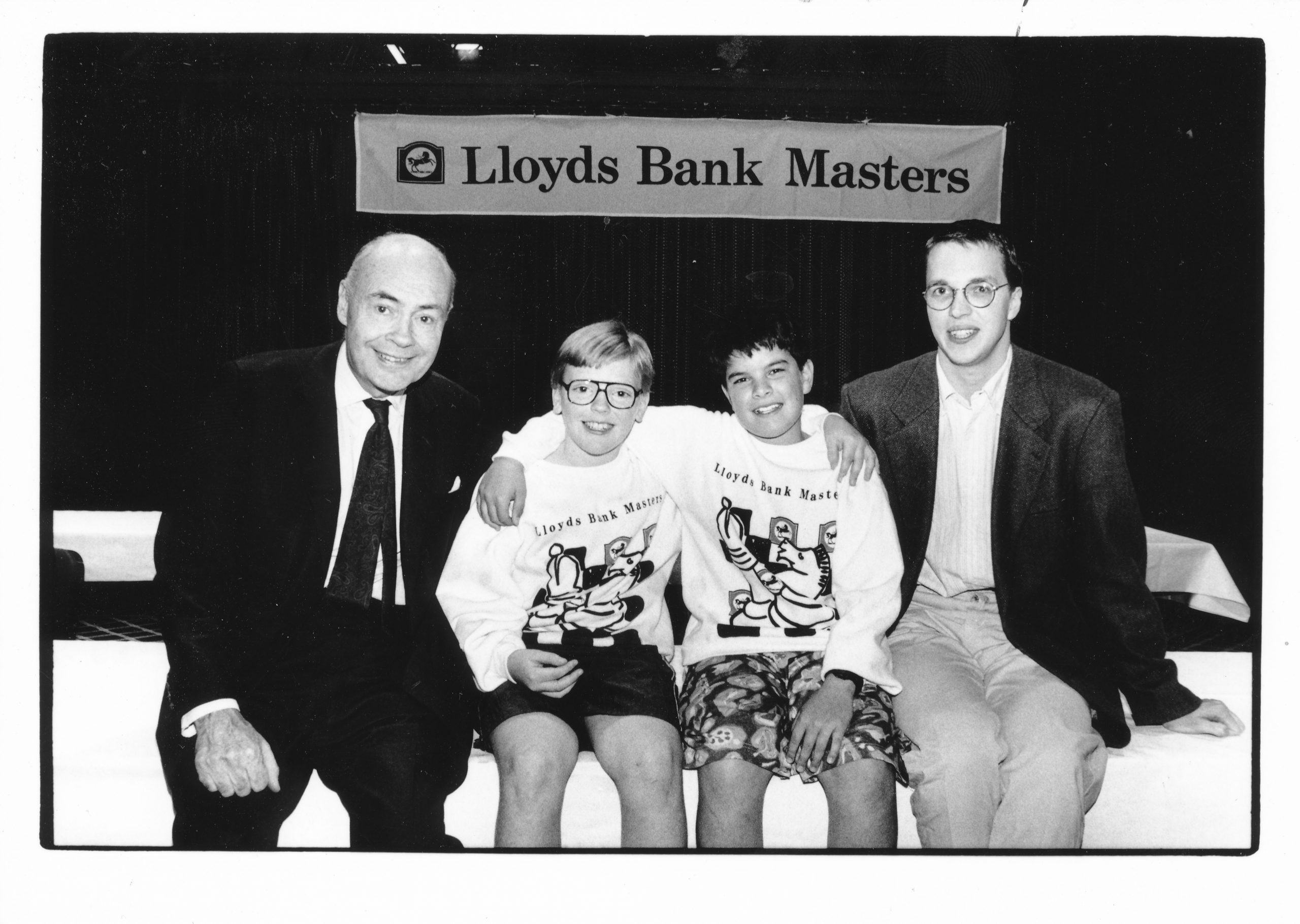
Adam became an International Master in 2001 and then a FIDE Trainer in 2016. According to Felice and Megabase 2020 his attained his peak FIDE rating of 2466 in January 2008 at the age of 28.

In 2004 Adam was living in Headington, Oxfordshire and in 2007 he moved to Ipswich in Suffolk and was married in 2019. Recently, Adam and his partner became parents to Henry.
As a junior (and together with Harriet) Adam first played for Cowley Chess Club.
Most recently Adam has played for 4NCL Blackthorne Russia, prior to that Bettson.com, Midlands Monarchs and Perceptron Youth with Witney being his original team.
He is Director of Chess at Woodbridge School in Suffolk and is the brother of IM Harriet Hunt
With the white pieces is (almost exclusively) an e4 player playing the main line of Ruy Lopez (8.c3) and favouring the Fischer-Sozin against the Najdorf.
As the second player Adam plays the Sicilian Najdorf and a 50:50 mixture of the King’s Indian and Grünfeld Defences.
Adam is the brother of IM Harriet Hunt
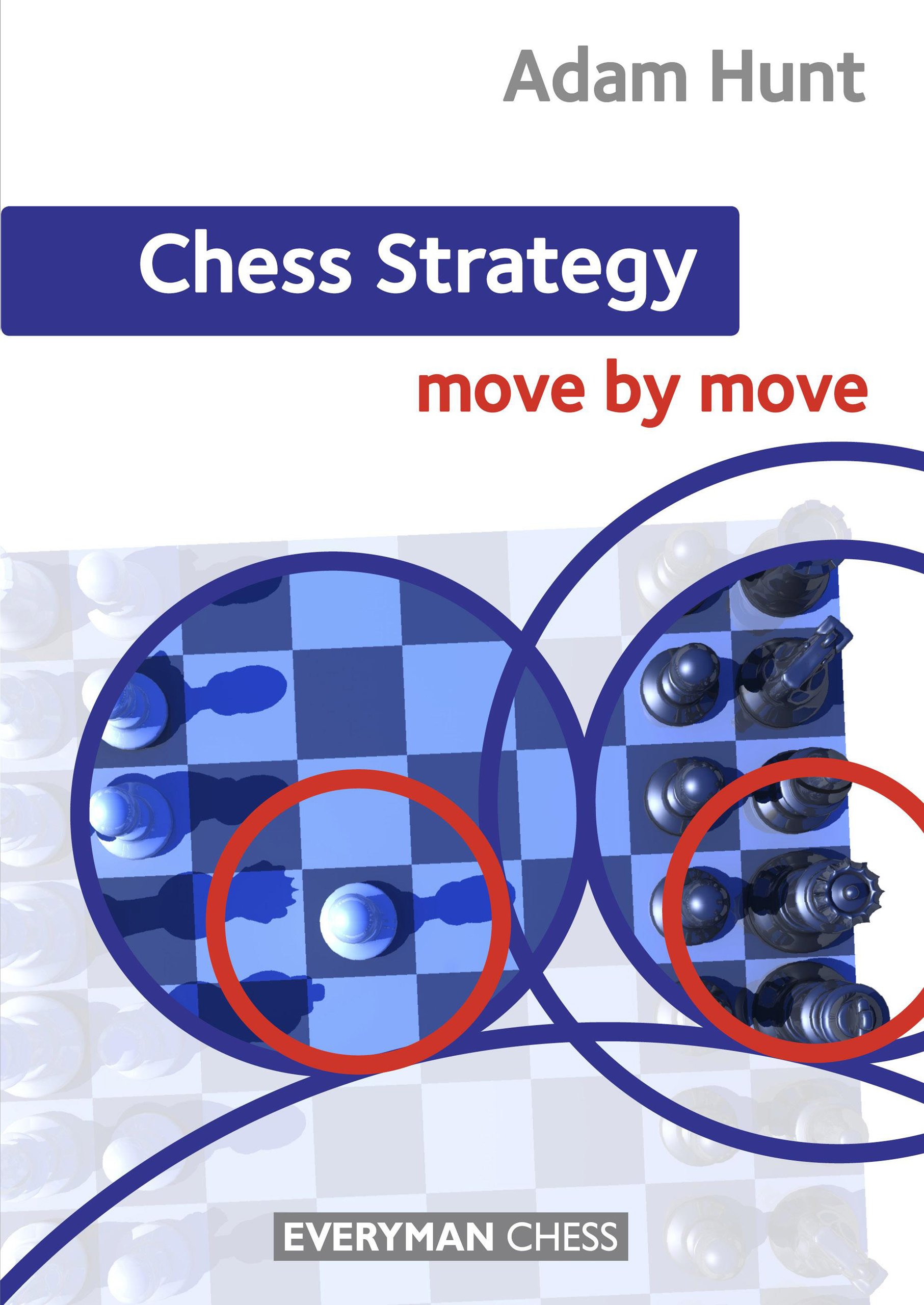
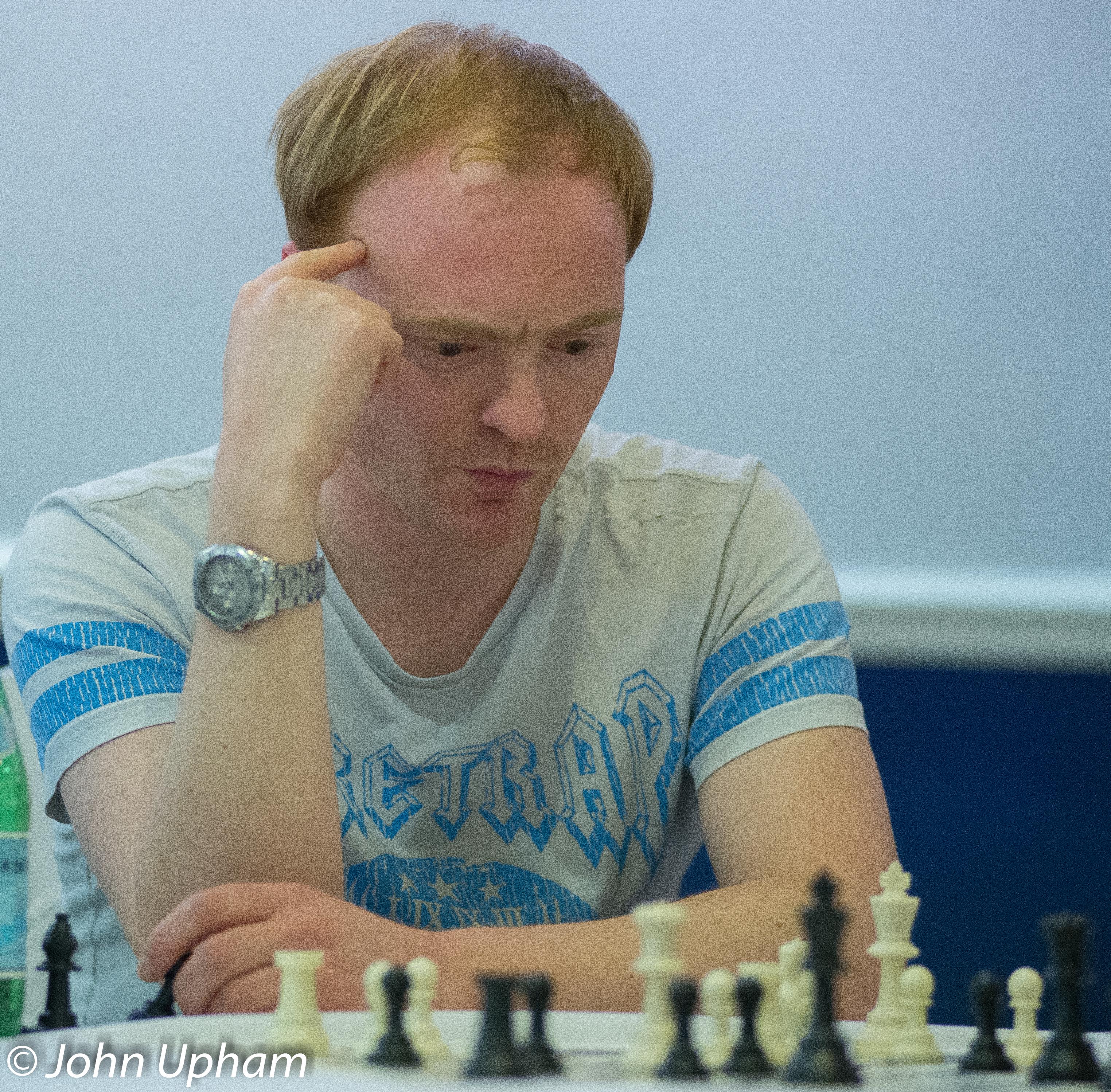
Timman’s Triumphs : My 100 Best Games
Timman’s Triumphs : My 100 Best Games : Jan Timman
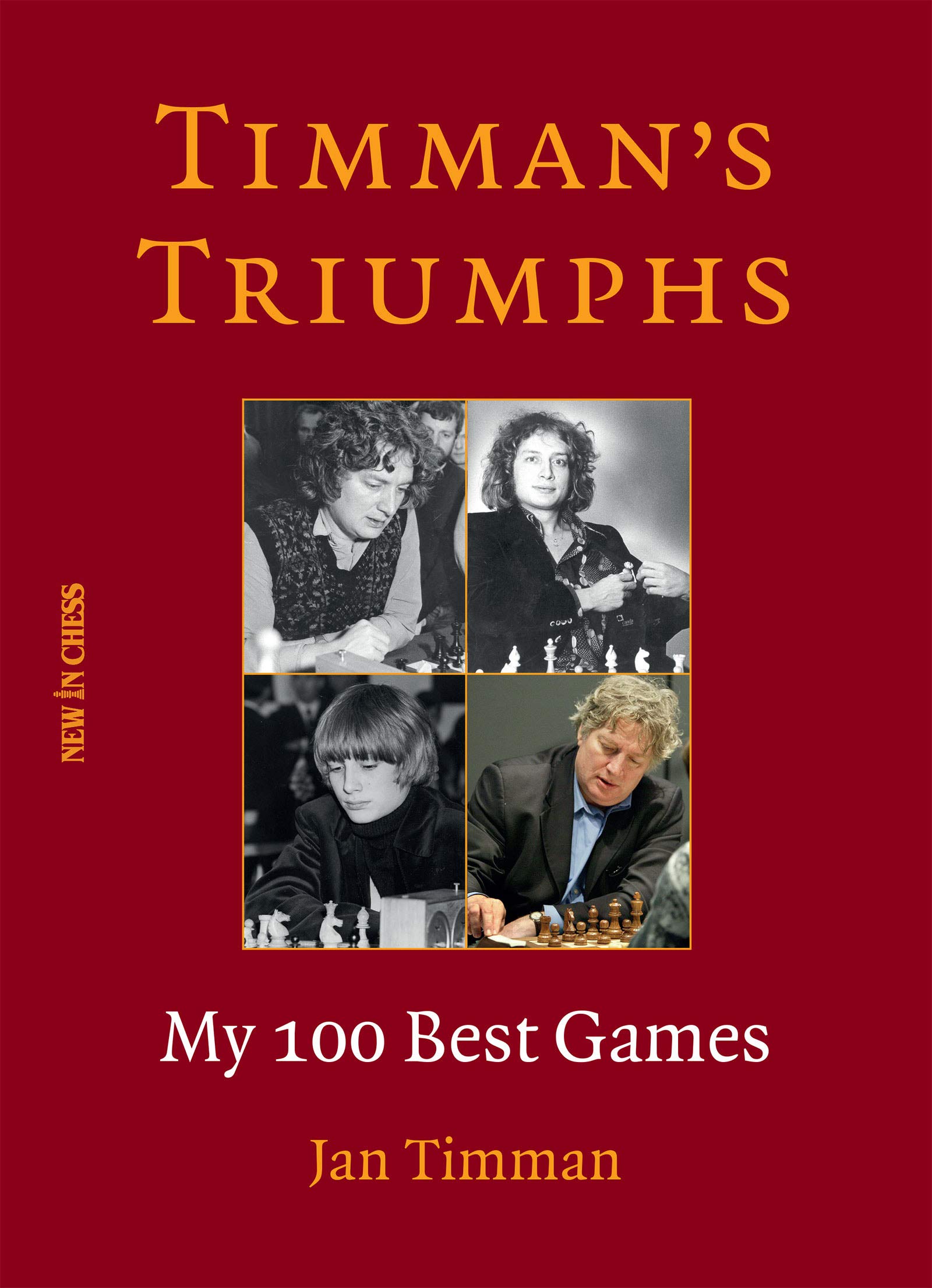
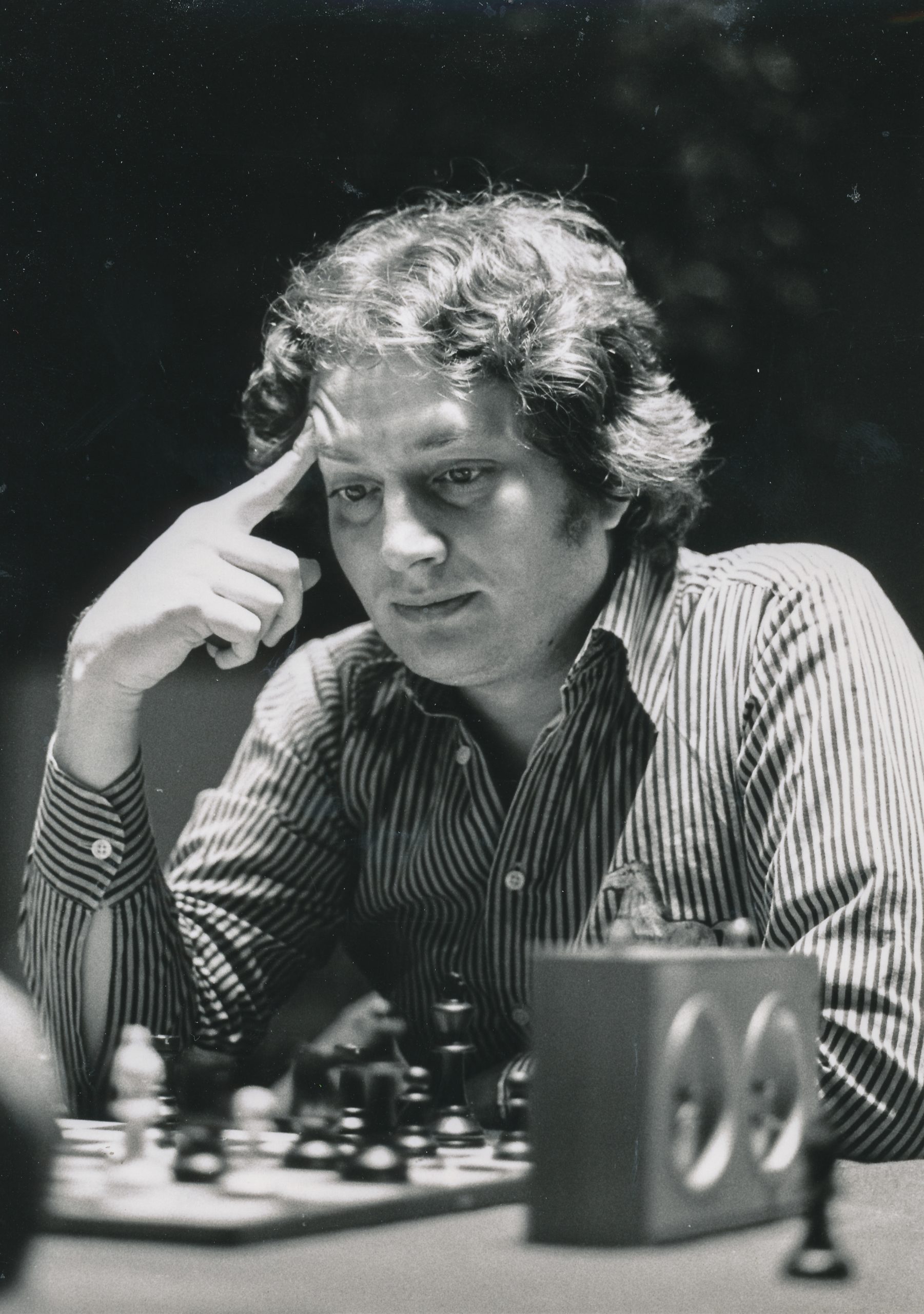
From the publisher :
“Jan Timman is the author of highly acclaimed books such as Curacao 1962 and The Art of the Endgame. His best-selling Timman’s Titans won the 2017 English Chess Federation Book of the Year Award. His previous book, The Longest Game, is a riveting account of the epic rivalry between Garry Kasparov and Anatoly Karpov.”
From the book’s rear cover :
“Jan Timman is one of the greatest chess players never to win the world title. For many years ‘the Best of the West’ belonged to the chess elite, collecting some splendid super tournament victories. Three times Timman was a Candidate for the World Championship and his peak in the world rankings was second place, in 1982. For this definitive collection, Timman has revisited his career and subjected his finest efforts to fresh analysis supported by modern technology. The result is startling and fascinating. From the games that he chose for his Timman’s Selected Games (1994, also published as Chess the Adventurous Way), only 10(!) made the cut. Some games that he had been proud of turned out to be flawed, others that he remembered as messy were actually well played. Timman’s Triumphs includes wins against greats such as Karpov, Kasparov, Kortchnoi, Smyslov, Tal, Spassky, Bronstein, Larsen and Topalov. The annotations are in the author’s trademark lucid style, that happy mix of colourful background information and sharp, crystal-clear explanations. Once again Jan Timman shows that he is not only one of the best players the game has seen, but also as one of the best analysts and writers.”
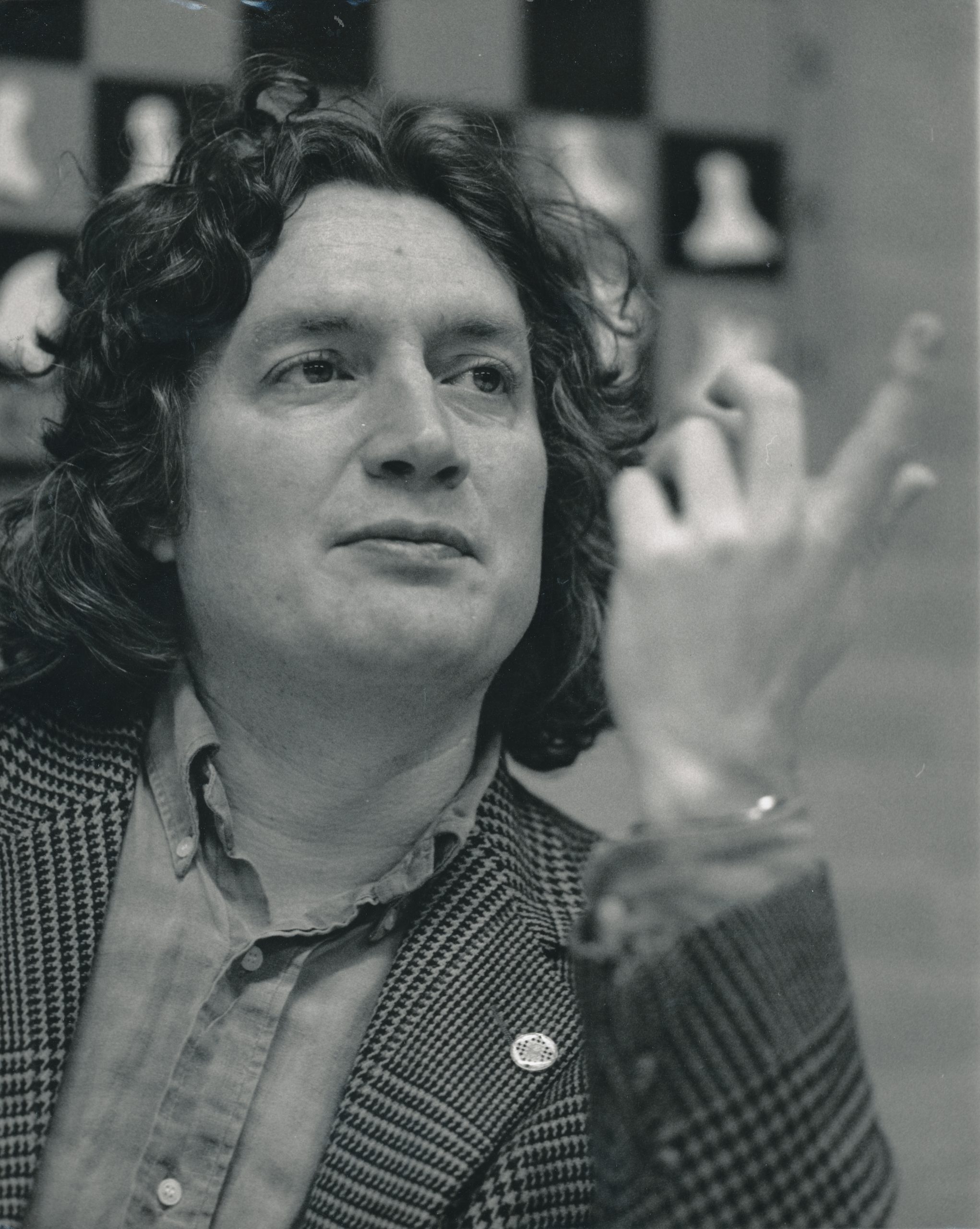
Jan Timman (b 1951) has had an active chess career lasting over half a century. For much of the 1980s he was considered the strongest player in the West, with only Karpov and Kasparov clearly his superior. He also has an enviable reputation as an excellent writer and annotator, as well as an expert on endgame studies.
Here, we have a collection of Timman’s 100 best games. In fact, that’s not quite true. The introduction includes two games which just missed the cut, plus another three extracts where he played a study-like move.
As this is a best games collection, you won’t find any losses. There are two draws, from either end of his career, and 98 wins. As you’ll see from the back cover, there’s very little overlap with Timman’s earlier best games collection, and those games now have totally different annotations.
The analysis has all been double checked using strong engines, so you can be pretty sure of its accuracy. At the same time, Timman’s annotations are resolutely old school, and, for this reviewer at least, none the worse for that. You don’t get reams of computer generated tactics, just lucid explanations, with variations only when necessary.
Take, for example, one of his quicker wins, a victory with the black pieces over Nigel Short from Linares 1992. Here’s how Timman annotates the conclusion.
But, as an endgame connoisseur, he occasionally goes into more detail when a fascinating ending appears on the board.
This position is from a game, again with Black, against Artur Yusupov (the book uses the German spelling Jussupow) played in Belgrade in 1989. This position arose just after the adjournment at the second time control. Here’s how Timman explains this position.
“The analysis during the break had taught me that a transfer to a rook ending was the most convincing path to the win. Jussupow had mainly looked at 63… b2. During the post-mortem, he told me that he had found drawing chances in that line. However, the computer is unrelenting. Black wins also here with two accurate king moves: 64. Rb1 Rd2 65. f5 Kd6! 66. Nf7+ Ke7!, and White cannot take on g6, since Black has the d3-square for his bishop.
“During the analysis, I also looked at the spectacular 63… Rd3+ 64. Kg4 Rd1. If this had worked, it would have been a study-like conclusion to the game. Alas, it doesn’t work. The main line continues as follows: 65. Rxd1 Be2+ 66. Kxh4 Bxd1 67. f5 Be2 68. f6 Kd6
and now White has the incredible finesse 69. Nc6!!. Luckily, I found this study-like save in my hotel room in Belgrade. After 69… Bc4 70. Na5! Bf7 71. Nxb3, a theoretically drawn endgame ensues.”
(The game concluded 63… Bd3 64. Nxd3+ Rxd3+ 65. Kg4 Rd4! 66. Rb1 Kb4 67. Rf1 b2 68. Kxh4 Rc4 69. Rb1 Kb3 70. Kg3 Rc3+ 71. Kg2 Kc2 and White resigned.)
These two examples will give you some idea of Timman’s annotation style.
Timman has always been a universal player who uses a wide range of openings so there’s a lot of variety in the play: no chance of getting bored by seeing the same type of position over and over again. Each game is put into its context regarding the tournament or match in which it took place. The text is also enlivened by many entertaining anecdotes, often concerning Timman’s rather hedonistic (especially in his early years) lifestyle. We read, for instance, about listening to Frank Zappa with Ray Keene, and taking the young Nigel Short to a nightclub on the eve of an important game.
There are many readers and who particularly enjoy best games collections: they will certainly revel in this excellent book. For those of you of Timman’s (and my) generation the book will also bring back many memories. For younger readers, though, much of it will be ancient history: perhaps they’ll get the same pleasure out of it that I got from studying the games of Alekhine and Capablanca many years ago.
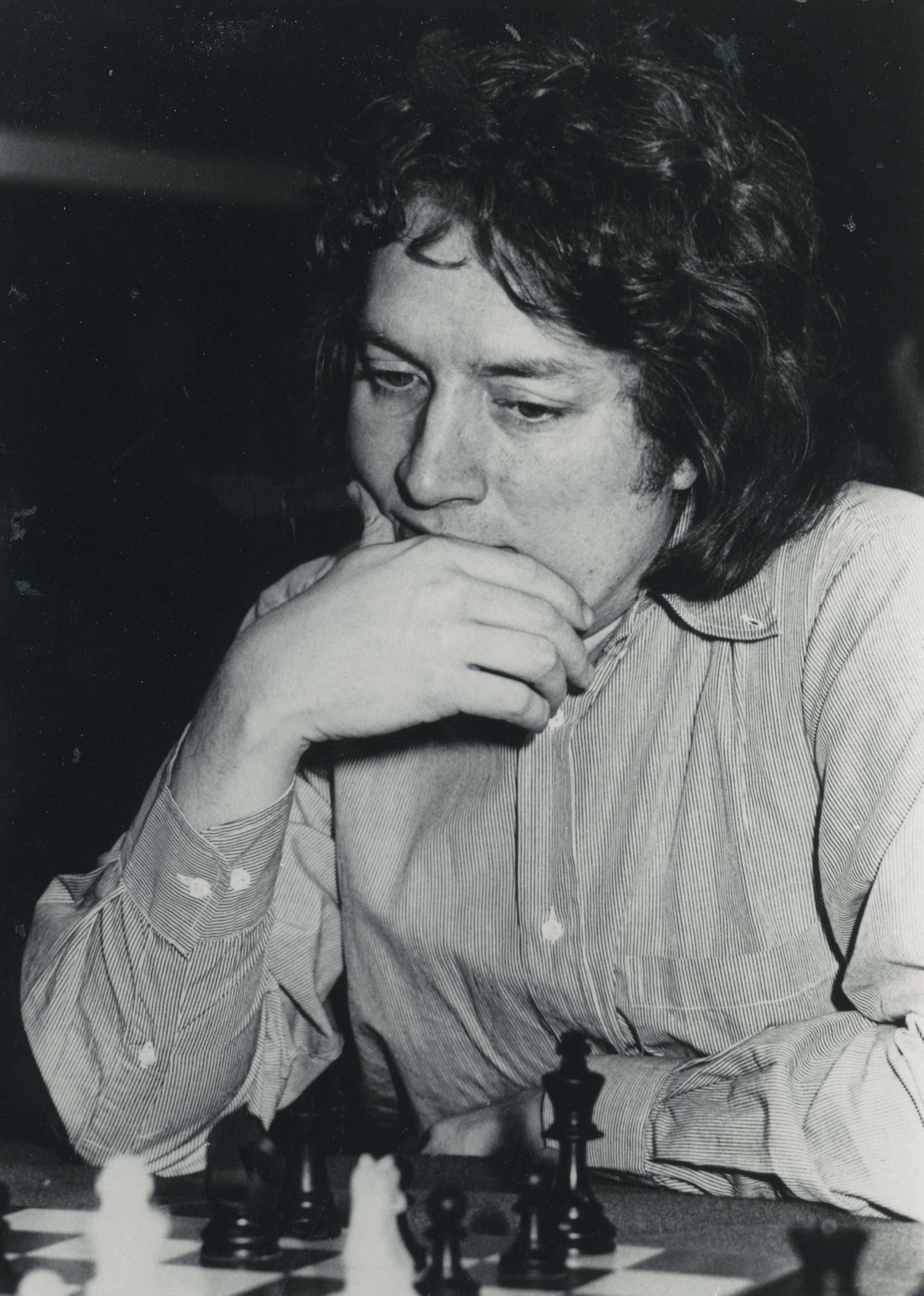
You might prefer a more spacious layout for the games. You might have liked a summary of his tournament and match results. You might have liked some tournament cross tables. But of course publishers have to make hard commercial decisions. At least we get an index of players (all players mentioned in the book for any reason, rather than an index of opponents) and an index of openings.
But, most importantly, you get 100 great games from one of the best players of the past 50 years, with lucid and instructive annotations. I’m pleased to give this book a warm recommendation.
One last thought. Timman tells us that someday he might write a book of his most exciting games, which would include more draws and several losses. Yes, please!
Richard James, Twickenham 17th October 2020

Book Details :
- Paperback : 352 pages
- Publisher: New in Chess (15 Oct. 2020)
- Language: English
- ISBN-10:9056919172
- ISBN-13: 978-9056919177
- Product Dimensions : 17.15 x 2.18 x 23.77 cm
Official web site of New in Chess


